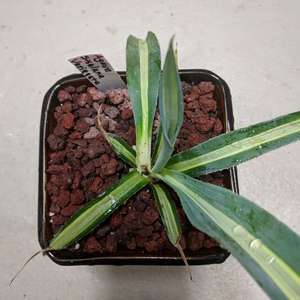成长记
2B_BotanicalFie
2018年08月11日

I now added "Pachyphytum Oviferum (Moonstone)" in my "garden"


0
0
你是我的糖:你这样插着可不行,要把叶子平躺着放
文章
Miss Chen
2018年08月11日

The bright shades of phlox are a welcome sight in the garden after a long winter. Whether it's the first sign of spring creeping phlox or the tall plants of summer, there is a phlox that fits every garden and provides colorful blooms almost all season long. Good for cut flowers, tall garden phlox also attract butterflies and hummingbirds.

Bloom Time
A common spring sight, creeping phlox produces a dense, low-growing mat of color. Blooming from April through to June, creeping phlox is available in a wide assortment of colors including pink, white, mauve, red, blue and purple and makes a striking statement along garden edges. Garden phlox grow to 4 feet of brilliant color and bloom July through to mid-September. A low-maintenance plant, garden phlox is available in bright shades of magenta, white, pink, red and blue.
Planting
All phlox prefer full sun, but will perform well in partial shade. Plant in moist, well-drained soil that has been amended with a few inches of compost. Garden phlox can mature to 2 feet in width at its base, so when planting, give them plenty of room to spread. Dig a hole comparable in size to the container the plant was grown in and ensure the top of the root ball is level with the soil surface when planted. Fill in the hole, water the plant well and add a layer of mulch to help maintain moisture and deter weeds. All phlox are hardy to U.S. Department of Agriculture plant hardiness zone 4.
Care
Add a layer of compost and mulch each spring to continue to deter weeds and keep the soil moist. Deadhead the faded flowers on garden phlox to promote new and continued blooms and prevent reseeding. Divide the plants every three years and in the fall after the first heavy frost cut tall garden phlox back to 2 inches above the base of the plant. Powdery mildew is a common affliction of phlox, and dividing regularly and providing added air circulation can help reduce the severity of the disease. Powdery mildew will not harm the plant, but it does cause the leaves and stems to develop a grayish white coating, which may turn yellow, and fall off the plant. As a result, mildew-resistant cultivars are becoming available at garden centers.

Phlox History
It was John Bartram in the 1740s who introduced phlox to England where it was then grown in many estate gardens. It became a garden staple in the 1850s as people found more leisure time and gardening became popular with many home owners. In 1837 alternative varieties of phlox began to emerge, and garden phlox remained popular until the 1930s when annuals took over as the garden plant of choice. It wasn't until the 1990s that perennials bounced back onto the gardening scene and the phlox has remained a common site in many perennials gardens ever since.

Bloom Time
A common spring sight, creeping phlox produces a dense, low-growing mat of color. Blooming from April through to June, creeping phlox is available in a wide assortment of colors including pink, white, mauve, red, blue and purple and makes a striking statement along garden edges. Garden phlox grow to 4 feet of brilliant color and bloom July through to mid-September. A low-maintenance plant, garden phlox is available in bright shades of magenta, white, pink, red and blue.
Planting
All phlox prefer full sun, but will perform well in partial shade. Plant in moist, well-drained soil that has been amended with a few inches of compost. Garden phlox can mature to 2 feet in width at its base, so when planting, give them plenty of room to spread. Dig a hole comparable in size to the container the plant was grown in and ensure the top of the root ball is level with the soil surface when planted. Fill in the hole, water the plant well and add a layer of mulch to help maintain moisture and deter weeds. All phlox are hardy to U.S. Department of Agriculture plant hardiness zone 4.
Care
Add a layer of compost and mulch each spring to continue to deter weeds and keep the soil moist. Deadhead the faded flowers on garden phlox to promote new and continued blooms and prevent reseeding. Divide the plants every three years and in the fall after the first heavy frost cut tall garden phlox back to 2 inches above the base of the plant. Powdery mildew is a common affliction of phlox, and dividing regularly and providing added air circulation can help reduce the severity of the disease. Powdery mildew will not harm the plant, but it does cause the leaves and stems to develop a grayish white coating, which may turn yellow, and fall off the plant. As a result, mildew-resistant cultivars are becoming available at garden centers.

Phlox History
It was John Bartram in the 1740s who introduced phlox to England where it was then grown in many estate gardens. It became a garden staple in the 1850s as people found more leisure time and gardening became popular with many home owners. In 1837 alternative varieties of phlox began to emerge, and garden phlox remained popular until the 1930s when annuals took over as the garden plant of choice. It wasn't until the 1990s that perennials bounced back onto the gardening scene and the phlox has remained a common site in many perennials gardens ever since.
0
0
成长记
2B_BotanicalFie
2018年08月11日

I now added "Hylocereus undatus - Drakenfruit (2)" in my "garden"


0
0
成长记
2B_BotanicalFie
2018年08月11日

I now added "Callisia Repens Pink Panther <Cutting 2>" in my "garden"


1
0
成长记
2B_BotanicalFie
2018年08月11日

I now added "Callisia Repens Pink Panther <Cutting>" in my "garden"


1
0
文章
Miss Chen
2018年08月11日

Black-eyed Susans (Rudbeckia) add a dramatic swash of color to summer garden beds, borders and planters. Most varieties have bright yellow blossoms, but red and purple varieties are also available. The upturned flowers have a central black seed cone that earns the plants their name. Seed production prevents the plants from producing a second set of blooms later in the season. Cutting back the black-eyed Susans can reward you with blooms throughout the growing season.

Step 1
Trim back the flower stems in summer after the blossoms begin to wilt. Cut the stems off ¼ inch above the topmost leaf. Plants that are cut back may flower a second time in the fall.
Step 2
Cut back the the entire black-eyed Susan plant after the first fall frost kills off any remaining flowers. Prune the stems down to just above the top healthy leaves. Cut off any dead or browned leaves.

Step 3
Spread a 2- to 4-inch layer of mulch over the black-eyed Susan bed once the ground begins to freeze, typically after three to four fall frosts have occurred. Mulch protects the crown of the trimmed flowers and helps them survive winter.

Step 1
Trim back the flower stems in summer after the blossoms begin to wilt. Cut the stems off ¼ inch above the topmost leaf. Plants that are cut back may flower a second time in the fall.
Step 2
Cut back the the entire black-eyed Susan plant after the first fall frost kills off any remaining flowers. Prune the stems down to just above the top healthy leaves. Cut off any dead or browned leaves.

Step 3
Spread a 2- to 4-inch layer of mulch over the black-eyed Susan bed once the ground begins to freeze, typically after three to four fall frosts have occurred. Mulch protects the crown of the trimmed flowers and helps them survive winter.
0
0


















